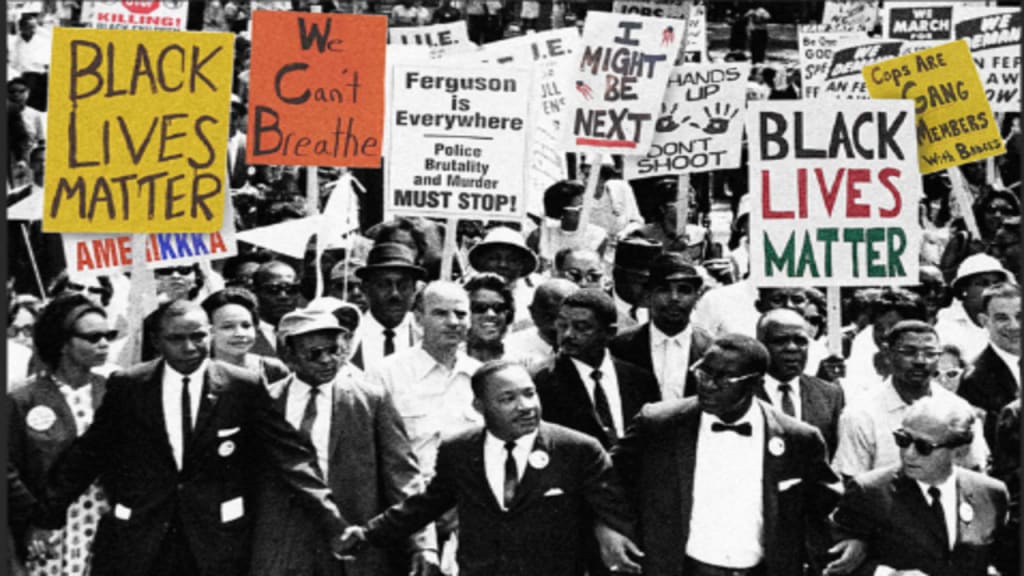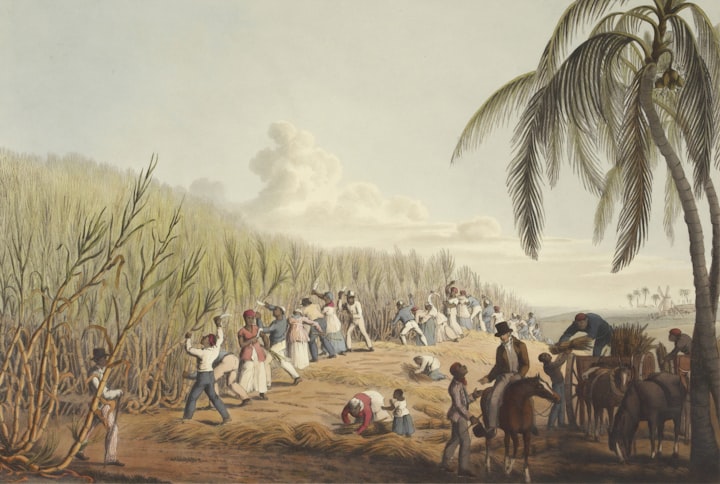The Rise of Civil Rights
A revolution that changed America

The Civil Rights Movement is one of the most iconic revolutions in the history of the United States. The movement was a decades-long revolution for social justice and equal rights by African-Americans that spanned from the 1950s to the end of the 1960s.
At the start of the 20th century, the Civil War and the Reconstruction Era ended and slavery was abolished, but Black Americans still suffered extreme racism and violence, particularly in the South. This was the era of the Jim Crow Laws, which were a set of laws that enforced segregation in the South and got its namesake from the minstrel show performed by its originator Thomas “Daddy” Rice and others.
The Beginnings
The purpose of the laws was to restrict African-Americans from public liberties such as attending the same areas as White Americans. Notable places being schools, restaurants, and transportation systems (trains, buses etc). The enforcement of the laws were fueled by the result of the Plessy vs Ferguson case in 1896, when the United States Supreme Court ruled that racial segregation was constitutional under the doctrine “separate but equal.” This was a result of black man Homer Plessy refusing to sit in the Black only train cart and the Supreme Court rejecting his argument that his constitutional rights were violated. Thus deciding that segregation was completely legal. The decision was eventually overturned in 1954 through the decision of Brown vs Board of Education.
Brown vs Board is a major moment in history and a prodigious Supreme Court case, as it is commonly seen as one of the foundations of the Civil Rights Movement. It demonstrated that racial equality was a necessity in the United States, and a unanimous decision was made with the Supreme Court ruling that segregation of children in public schools was unconstitutional. This initiated the notion that “separate but equal” in schools and other public services was unequal.
The evolution of the Civil Rights Movement was a complex process as various events and leaders rose to prominence during this era. This stemmed from early controversial events such as the murder of Emmet Till, a 14-year-old black boy who was killed by supremists for allegedly whistling at white woman, and the mob was found not guilty which outraged the public following Till’s opened casket funeral. As well as the Rosa Parks event, that saw her refuse to give up her seat for a white man, which manifested into the Montgomery Bus Boycott. A campaign that lasted an entire year. These events along with several others grew into nationwide revolution consisting of marches, interracial protests againsts Jim Crow and leaders such as Marin Luther King Jr and Malcolm X spreading the ideals of racial equality.
African-Americans take a stand
Despite the extreme opposition the southern blacks faced in the fight for equality and the same rights as white people, the Civil Rights Movement was ultimately successful. Through the years 1960-1965, the goals African-Americans strived for were achieved in nonviolent fashion. Beginning with the lunch counter sit-ins in Greensboro, North Carolina. The Student Nonviolent Coordinating Committee (SNCC) orchestrated a campaign to protest segregated lunch counters with four black students sitting at the counter and requested service. Despite police being called they could not charge the four as they were paying customers. This act gained widespread media attention that was soon practiced throughout the South with students being jeered and physically attacked by hostile whites. However, the campaign was an early victory as restaurants lost thousands of dollars because of the sit-ins and many lunch counters became desegregated.
The Freedom Rides were also a prime example of showing the brutality of the Ku Klux Klan who harshly beat the riders who were protesting segregated bus terminals. This resulted in a number of ambushes, particularly in Anniston, Alabama, that saw a white mob blow up the Freedom Rider bus and attack the people when they escaped the vehicle with no police intervention. The intense violence caught media attention as well as U.S Attorney General Robert Kennedy stepped in and dispatched federal marshals to repel he white mob from attacking the rides. The rides continued with strong support from the Kennedy administration that led to the Interstate Commerce Commission to pass the prohibition of segregated transit terminals.
The foundation and leaders of the movement
The true backbone that led to the overall success of the Civil Rights Movement were the Civil Rights Act of 1964 and the Voting Rights Act of 1965. African-Americans relentless nonviolent battles to gain those acts are some of the most critical moments of the 20th century from the actions of the sit ins and freedom rides to Martin Luther King Jr’s legendary “I Have A Dream” and the Assassination of President John Kennedy. These are the events and leaders that truly defined the success and foundation of the Civil Rights Movement. Two of the most prominent leaders of the movement were Martin Luther King Jr and Malcolm X. Although both fought for equal rights, they had contrasting ideals and methods in achieving the goals of the movement. Martin Luther King Jr, who was the face of the Civil Rights Movement, advocated nonviolent strategies such as marches, embracing freedom songs such as “We Shall Overcome”, which became the national anthem of the Civil Rights Movement and petitioning Presidents Kennedy and Lyndon B. Johnson for the Civil and Voting Rights Acts to be passed. Malcolm X had a more warmonger attitude by advocating the use of violence and self-defense against white oppression and the government itself in order to gain equal rights.
The two leaders were like fire and ice with King preferring the subtle and peaceful way of handling racism and hostility, while Malcom was partial to a more direct approach by encouraging African-Americans to be armed and get physical to protect themselves from the Ku Klux Klan and other racists “By any means necessary.” King’s method ultimately proved to be more successful than Malcom’s due to his pacifist philosophy reaching people of all races, especially after the “I Have A Dream'' speech during the 1963 March on Washington. This event as well as the campaign in Selma, Alabama that included the infamous “Bloody Sunday'', where Alabama Troopers attacked unarmed marchers protesting segregated voting; ultimately led to President Johnson signing the Civil Rights Act of 1964 and Voting Rights Act of 1965 respectfully. The former ending segregation in public places and employment discrimination based on race, color, religion, sex or national origin. The latter ceasing restrictive state and local voting barriers that disenfranchised African-Americans and enforcing the 15th Amendment in the process. These were the pivotal moments of the Civil Rights Movement that many Americans, black and white, fought and sacrificed in order to put an end to the Jim Crow era for good.
Conclusion
Overall, through the Emmet Till and Rosa Parks incidents, sit-ins, freedom rides, marches and the leaderships of Martin Luther King Jr and Malcolm X. The Civil Rights Movement stands as one of the most important and definitive eras in history and the gradual end of racism as a prominent trend in America.
About the Creator
Kylecovey Smith
Historian, Linguist, Author (Voyages of the 997 & The Method Mission), YouTuber/TikToker (Master Mojo) and now Vocal writer enjoy and critique my writing as please.
Reader insights
Outstanding
Excellent work. Looking forward to reading more!
Top insights
Easy to read and follow
Well-structured & engaging content
Expert insights and opinions
Arguments were carefully researched and presented
On-point and relevant
Writing reflected the title & theme






Comments
There are no comments for this story
Be the first to respond and start the conversation.